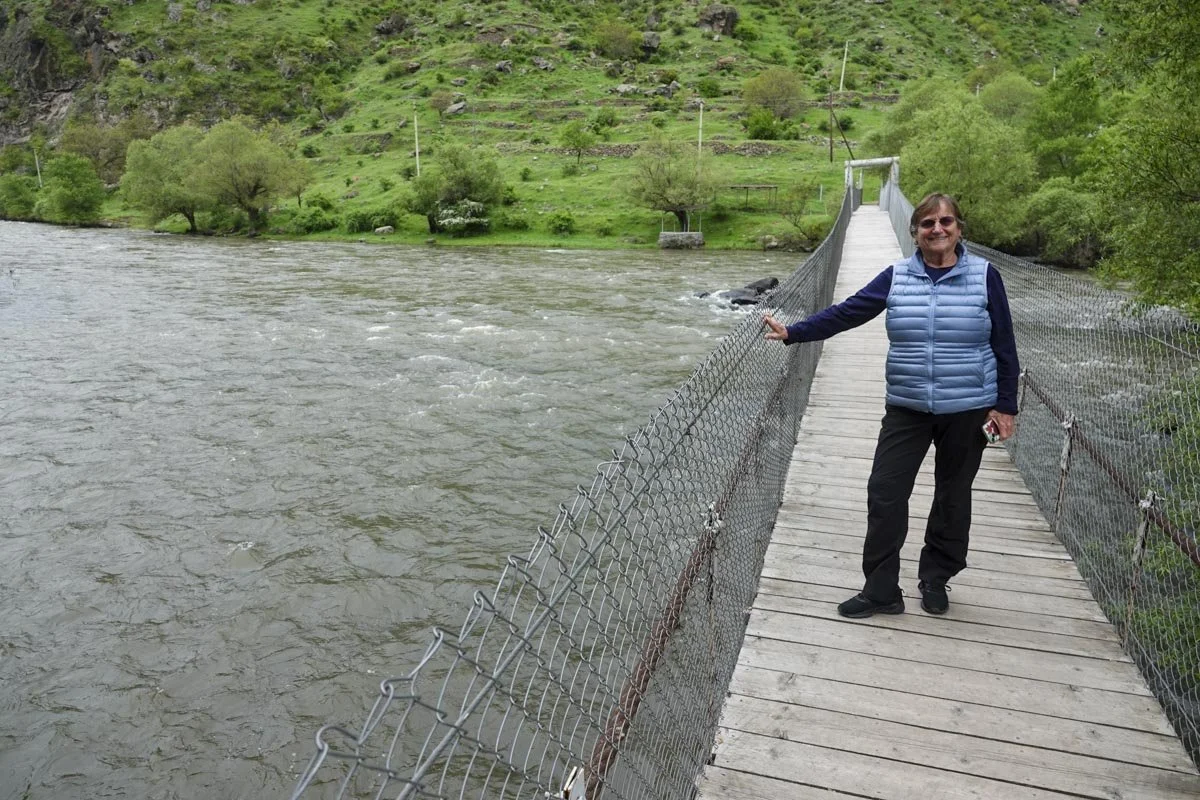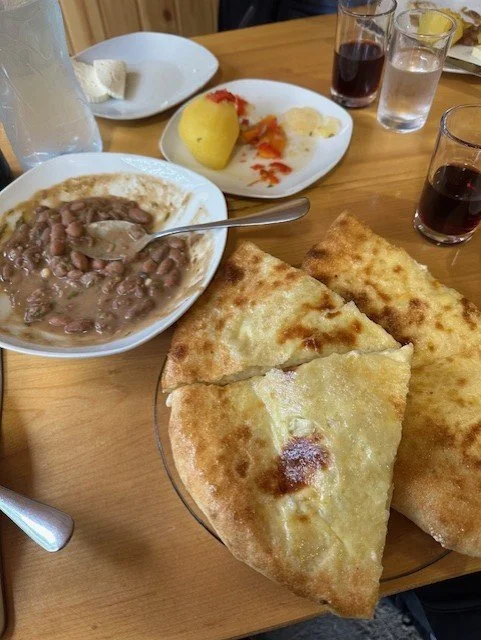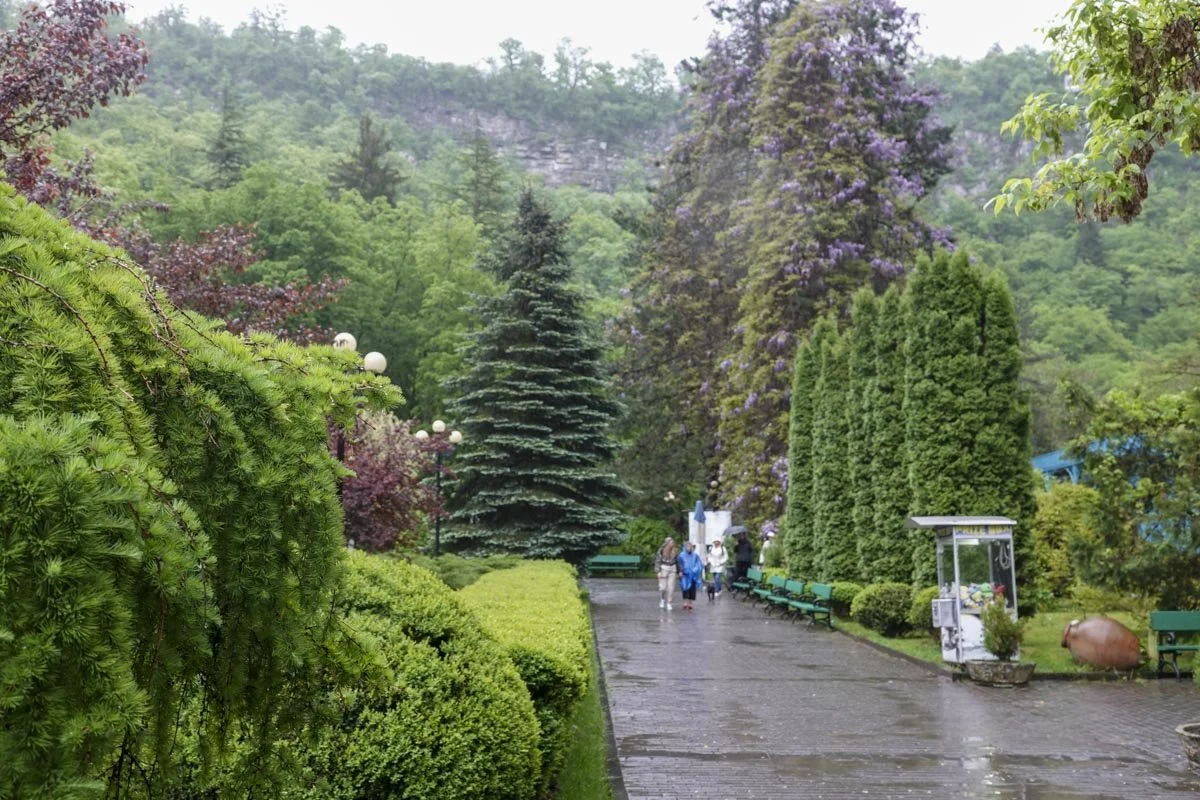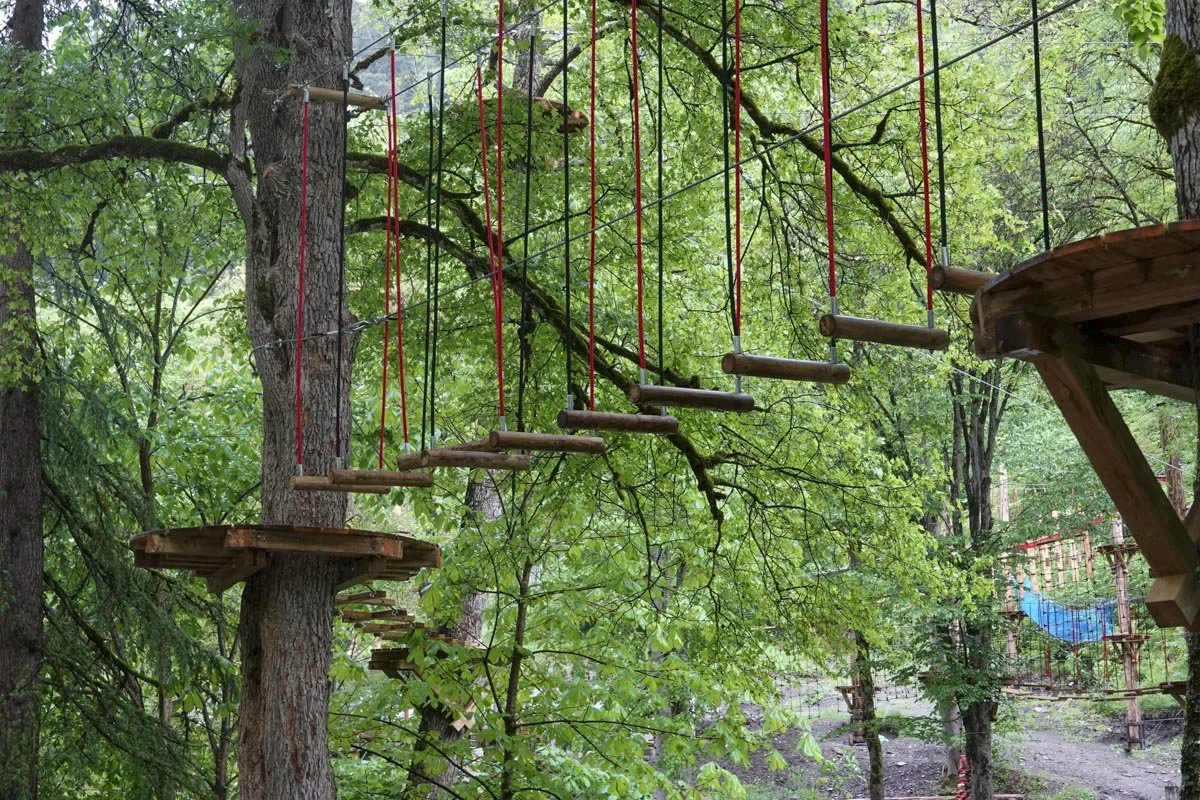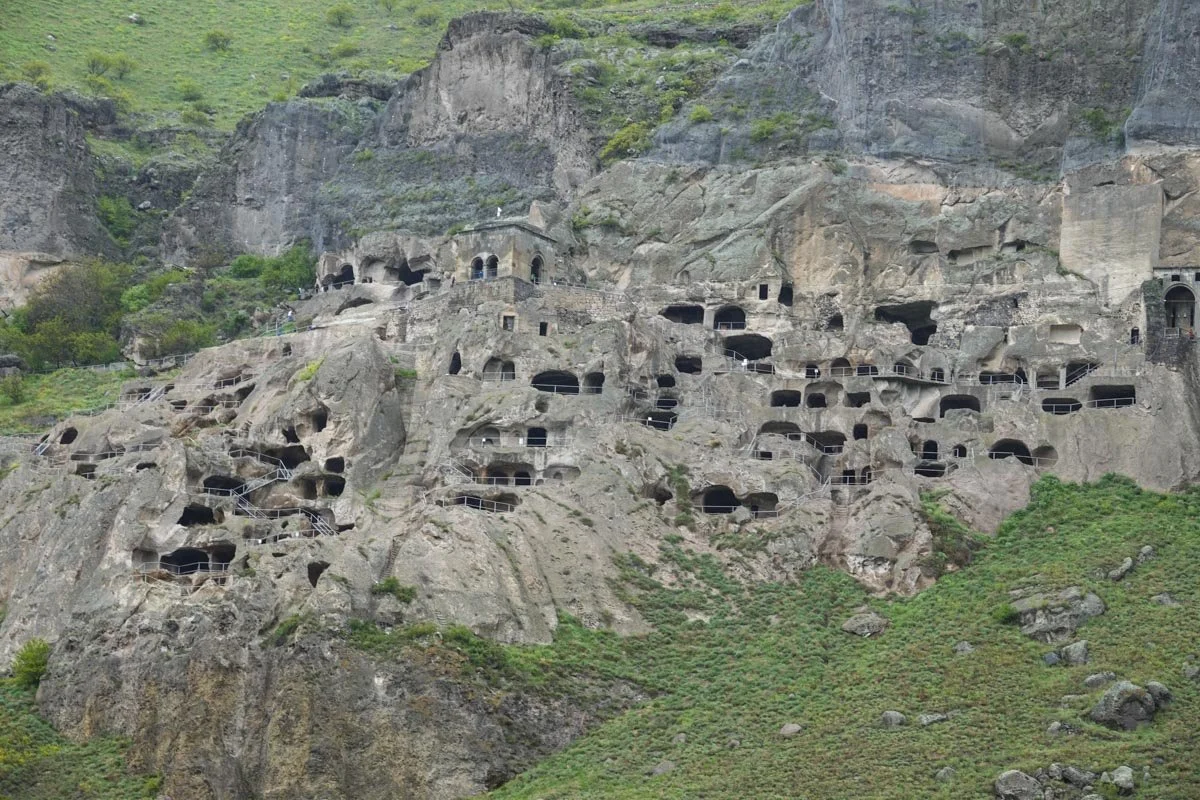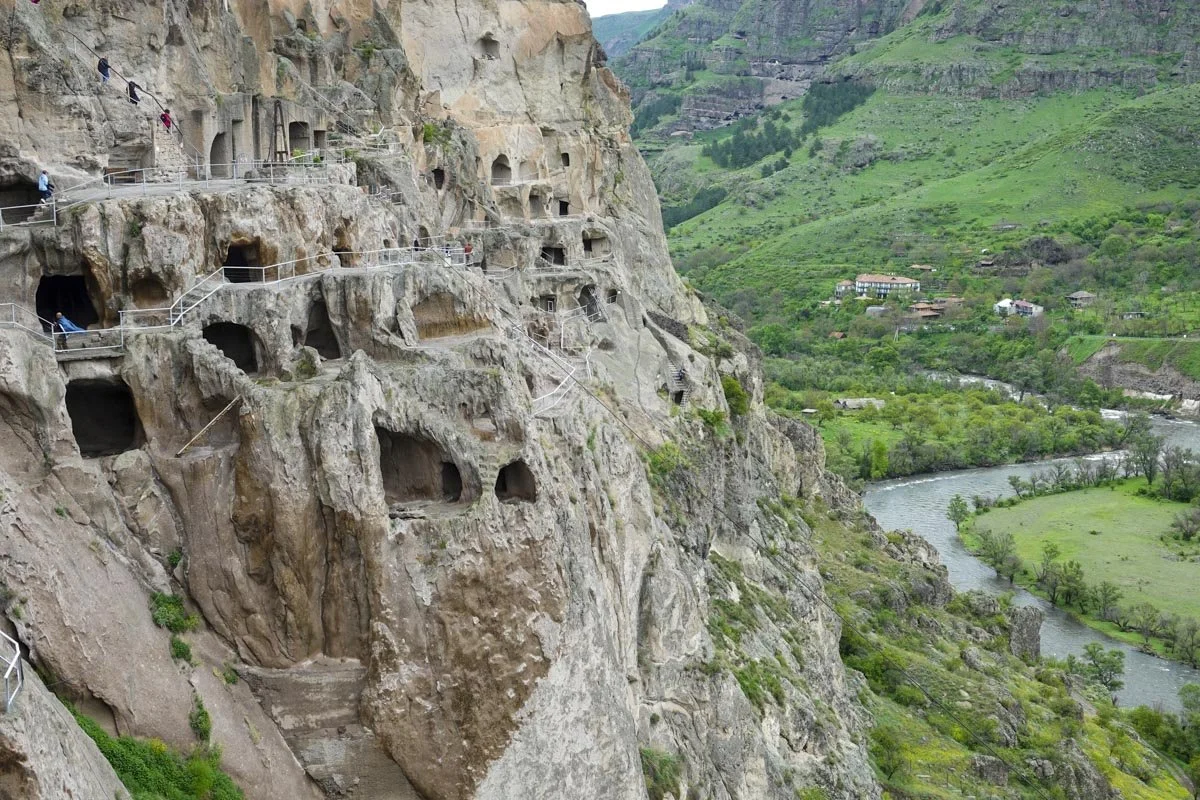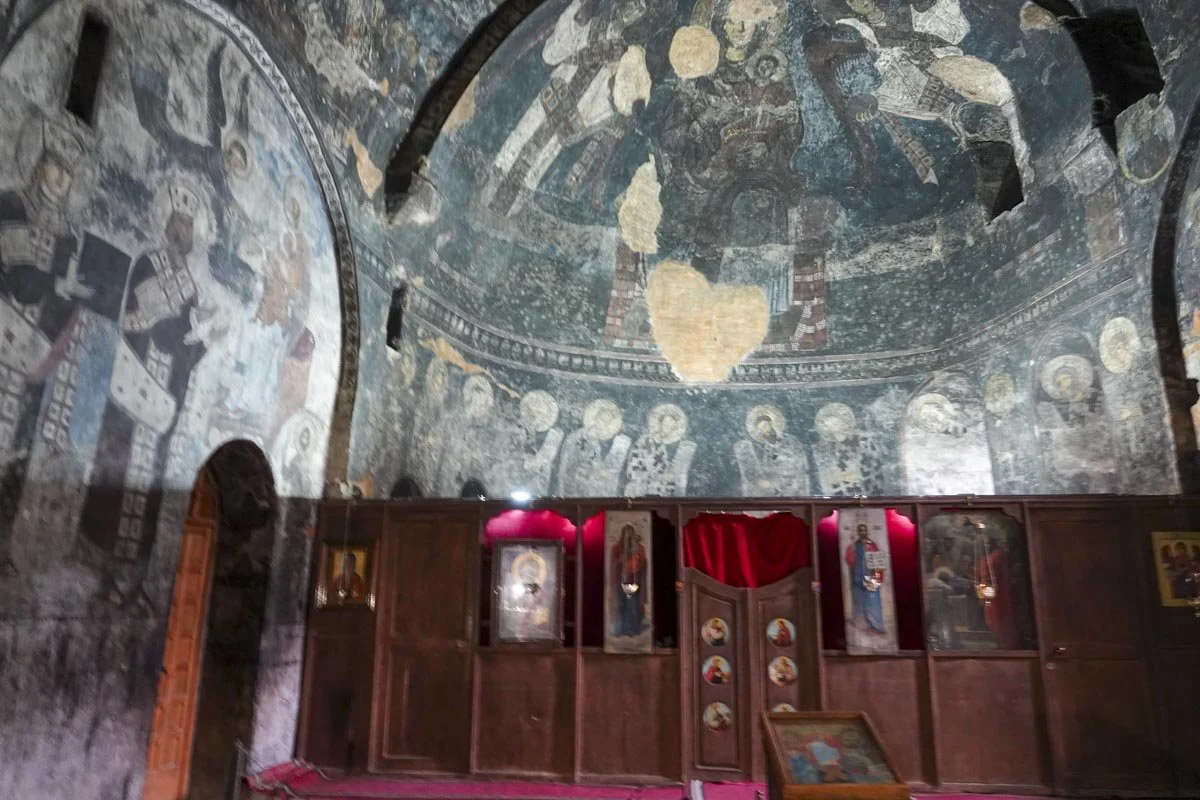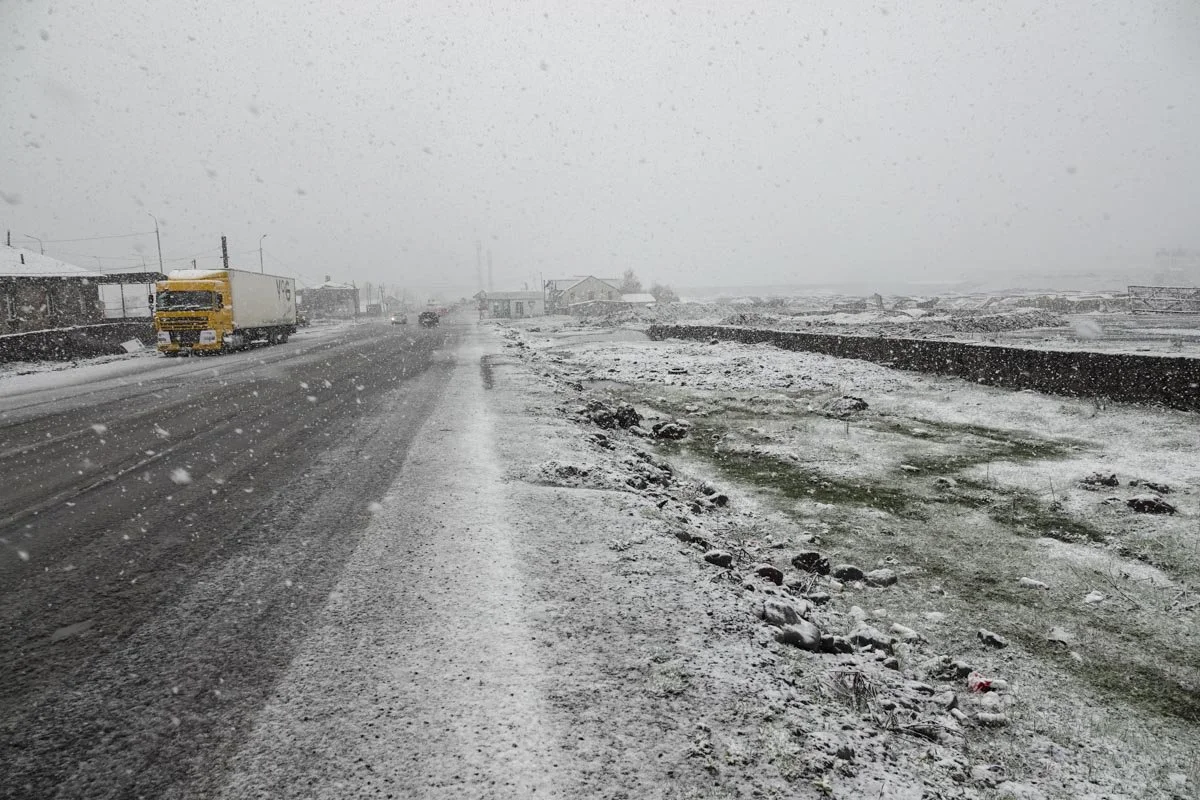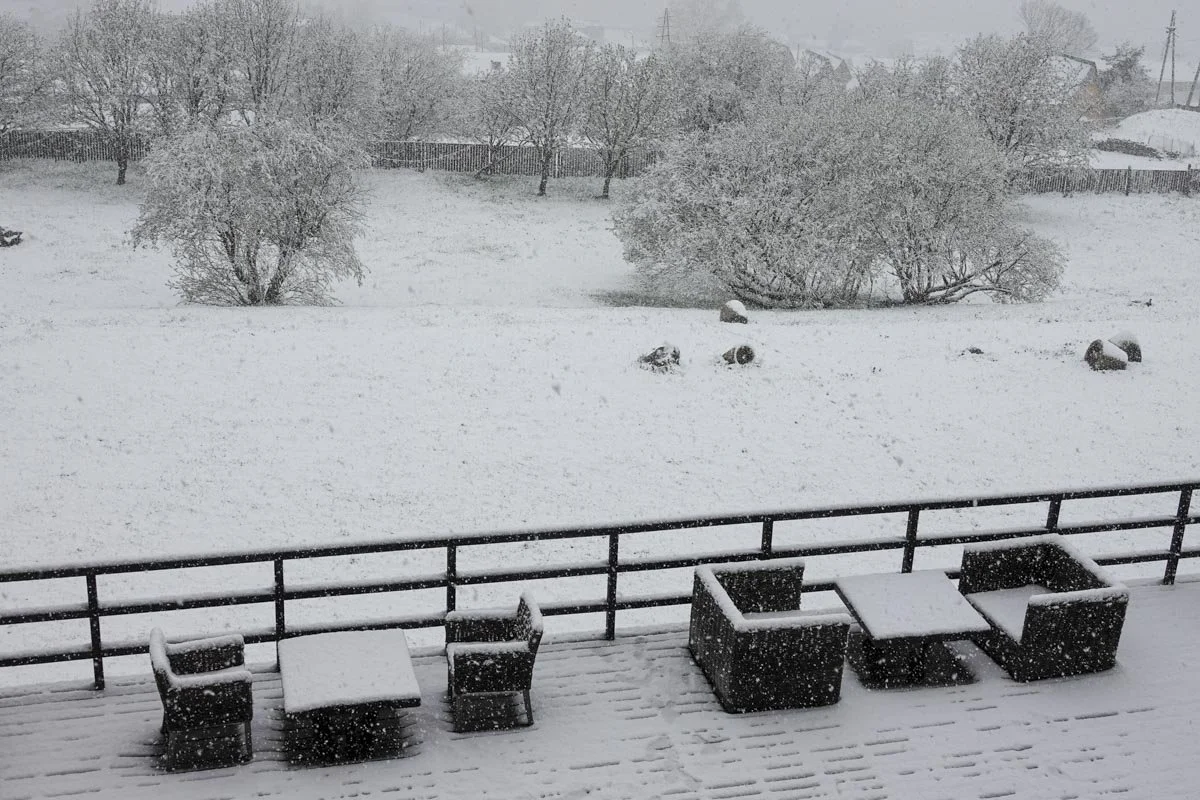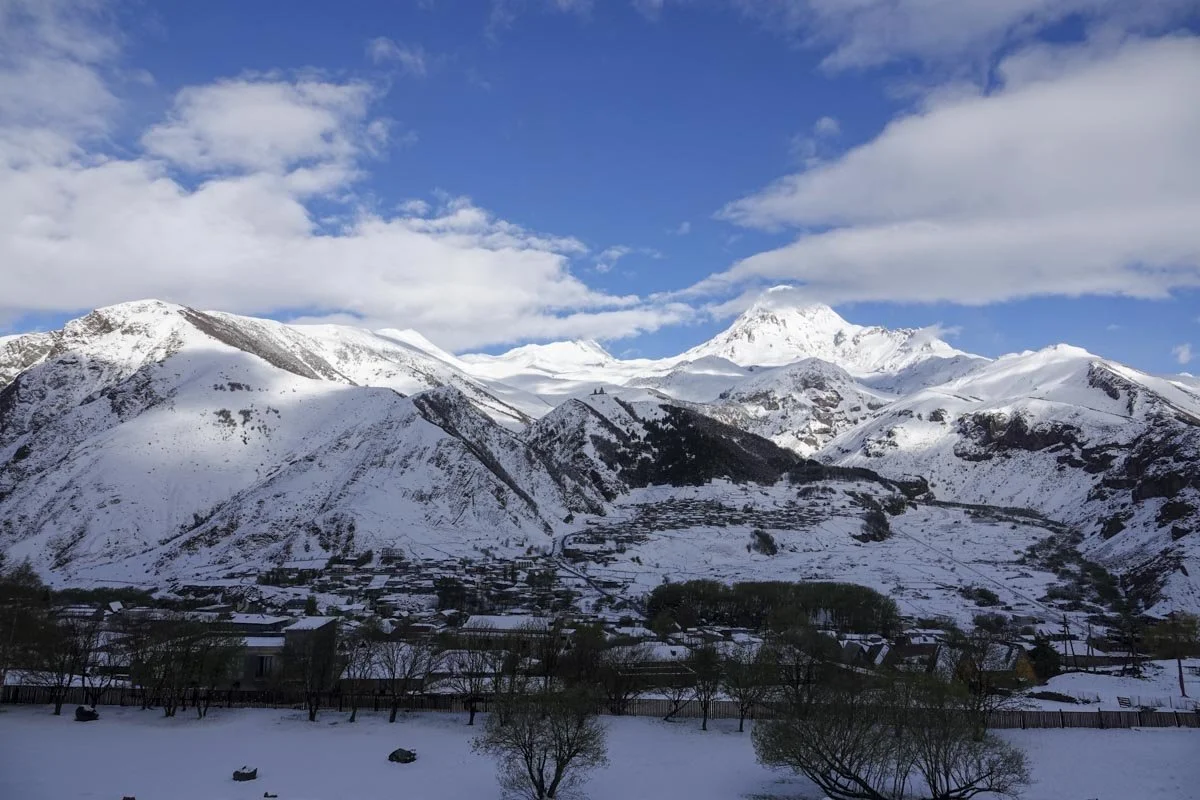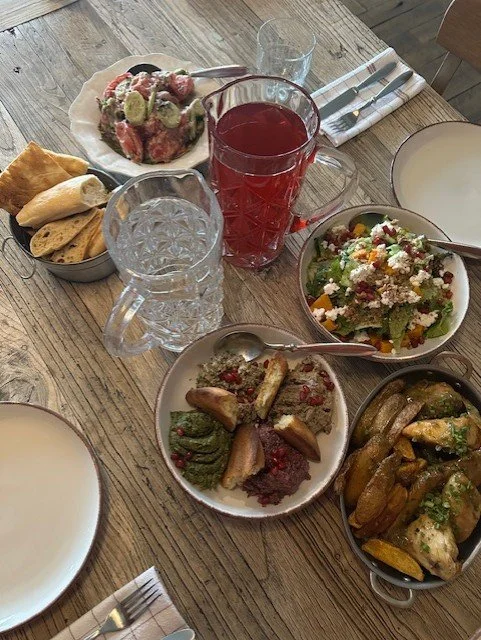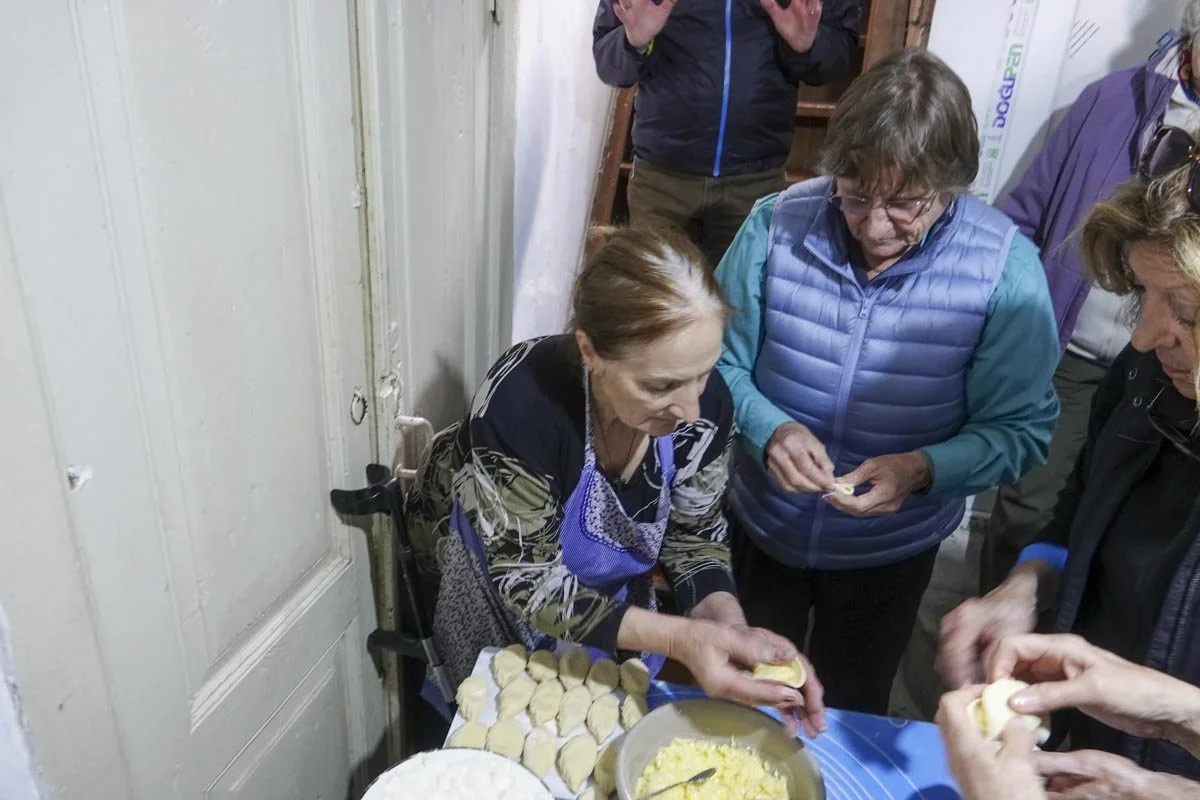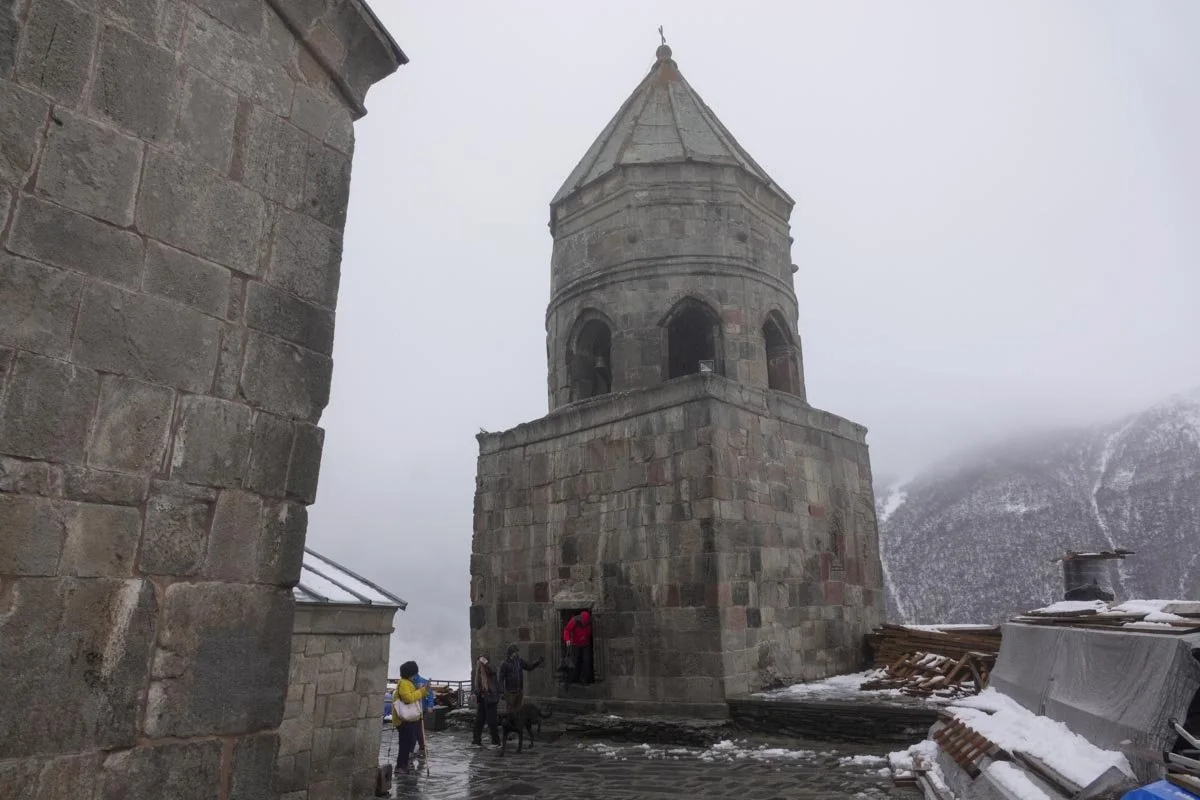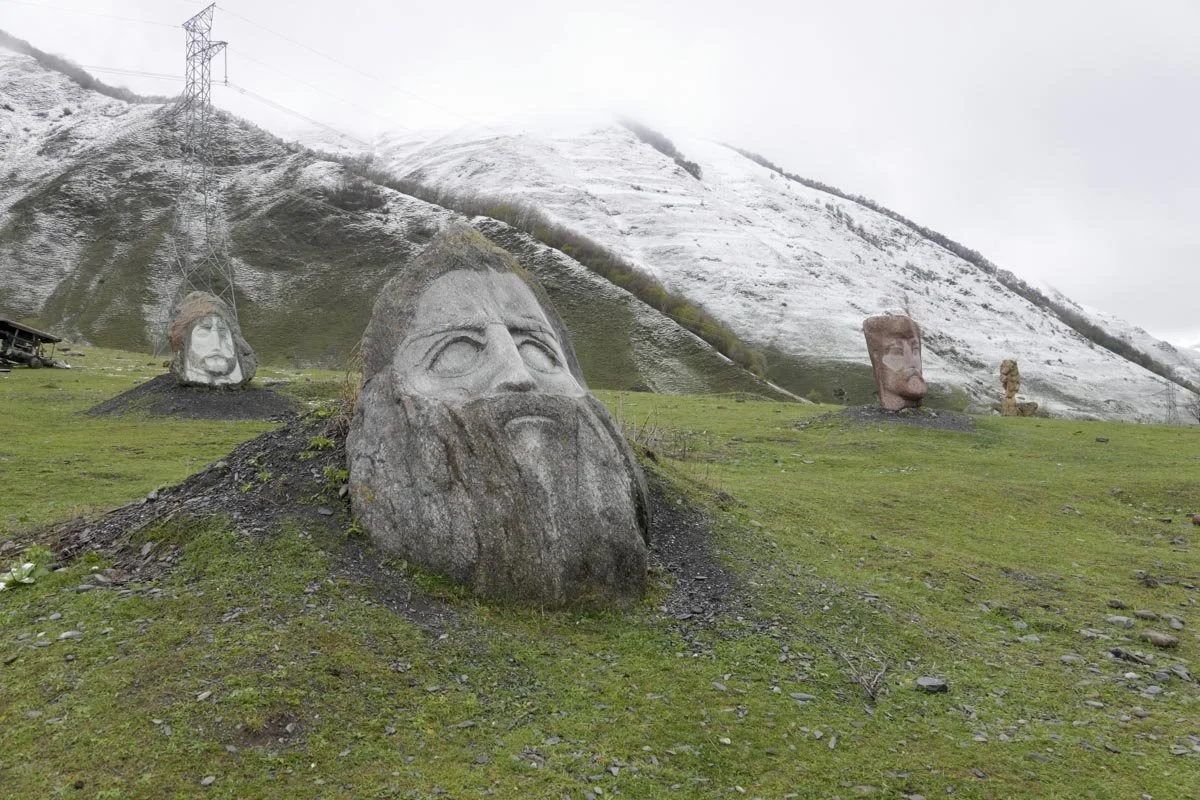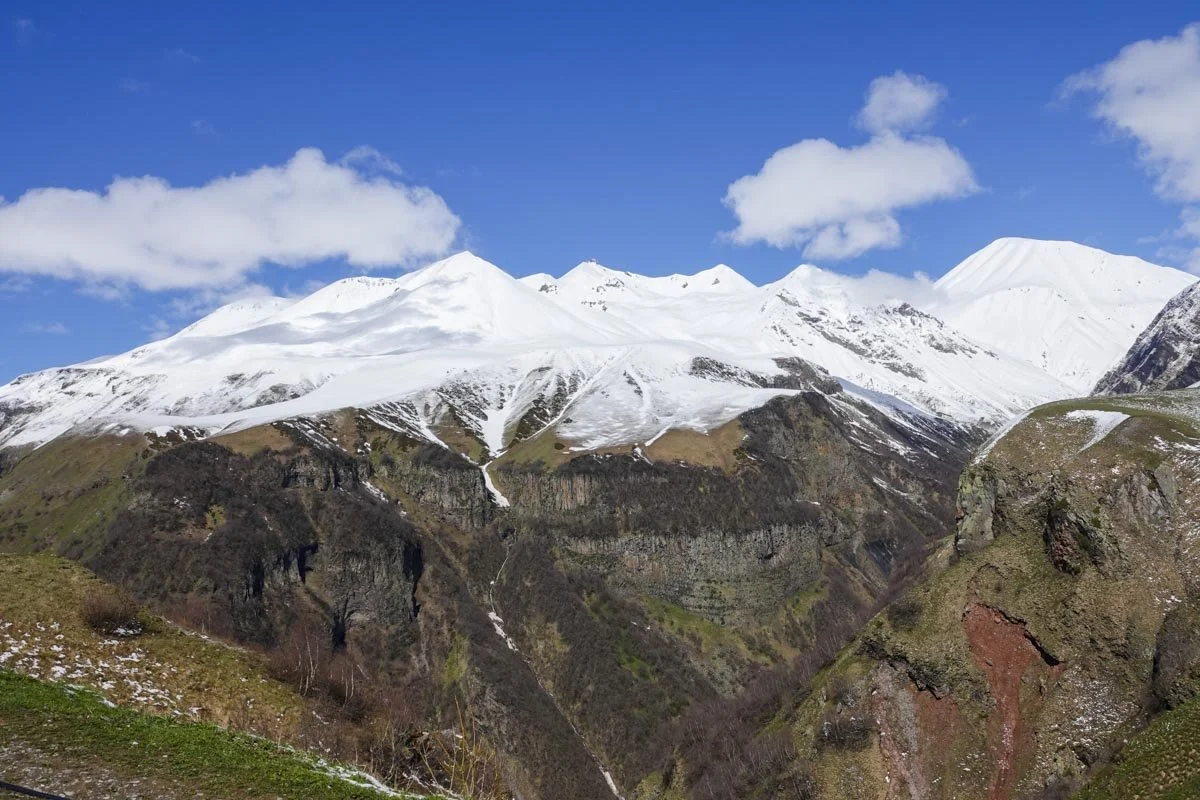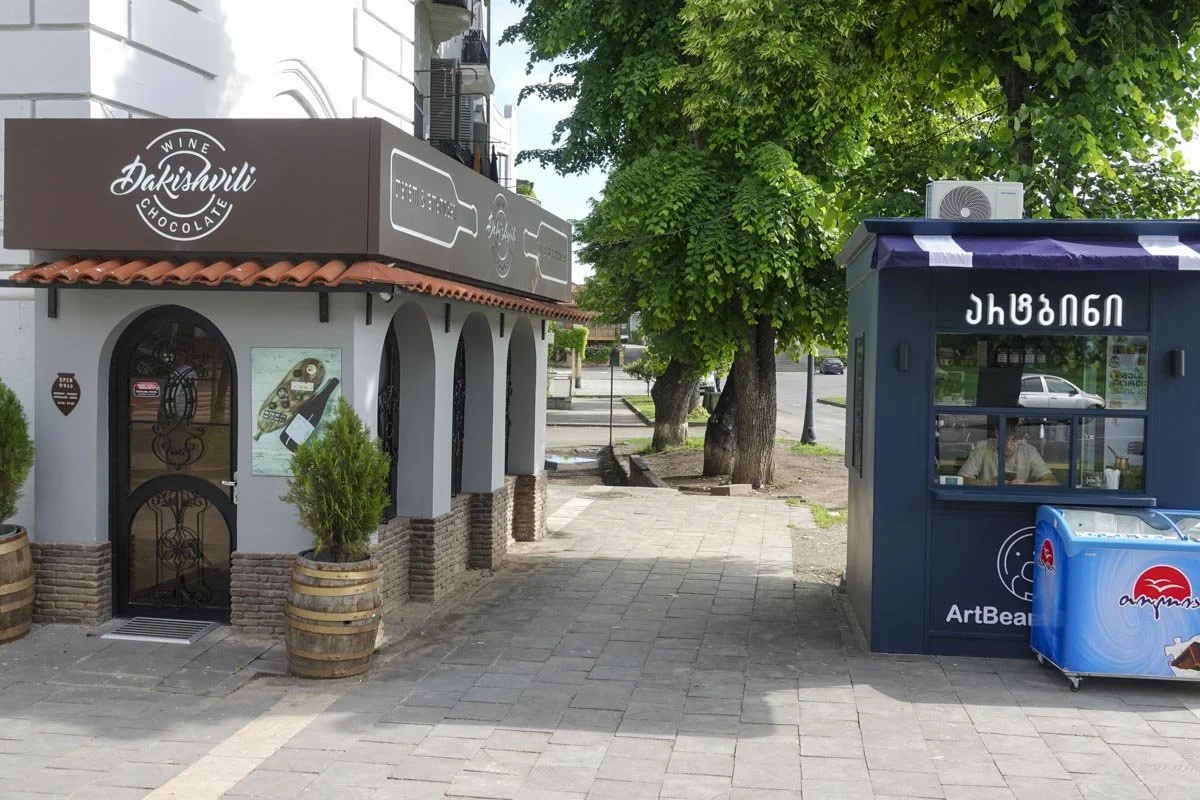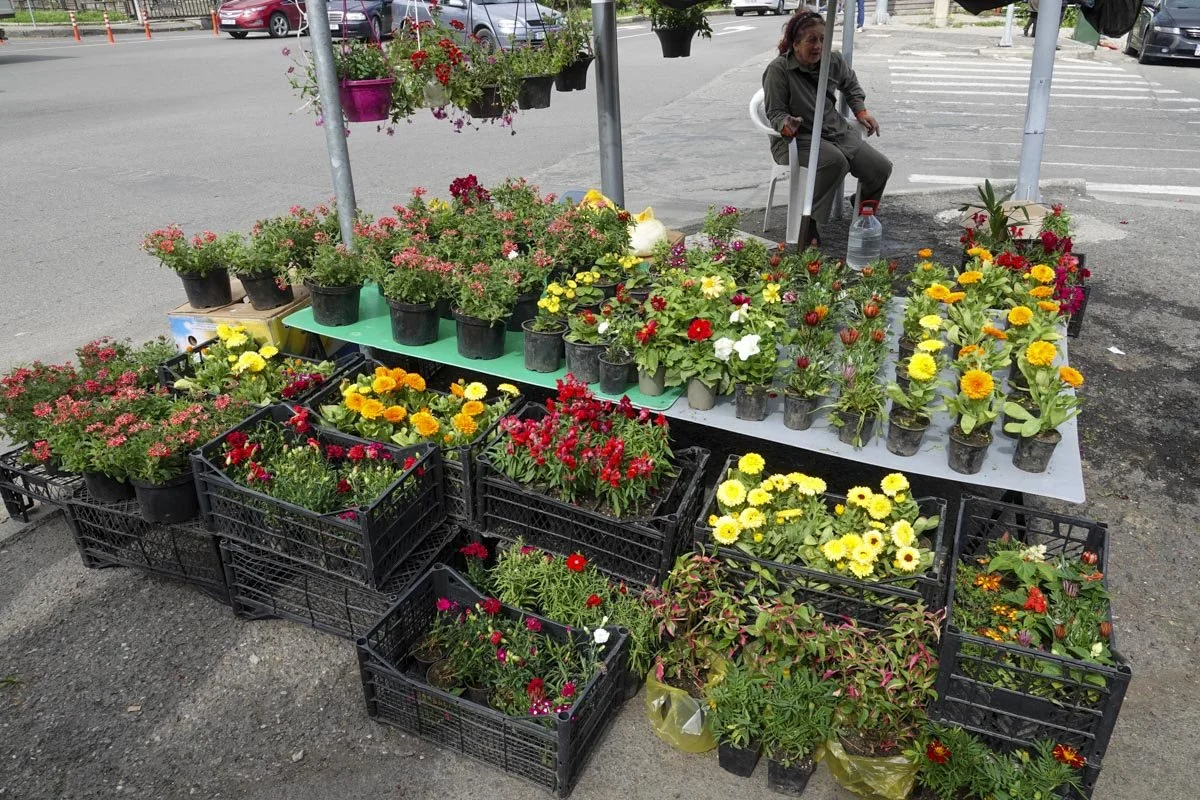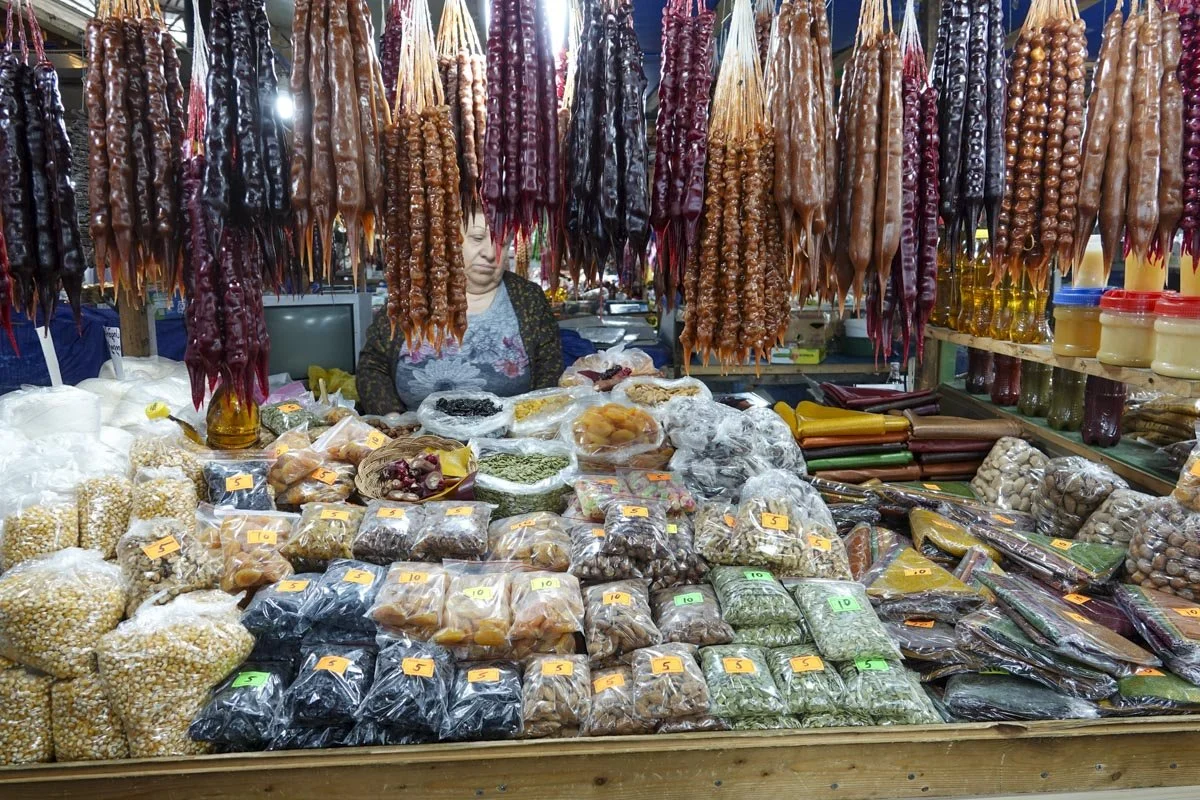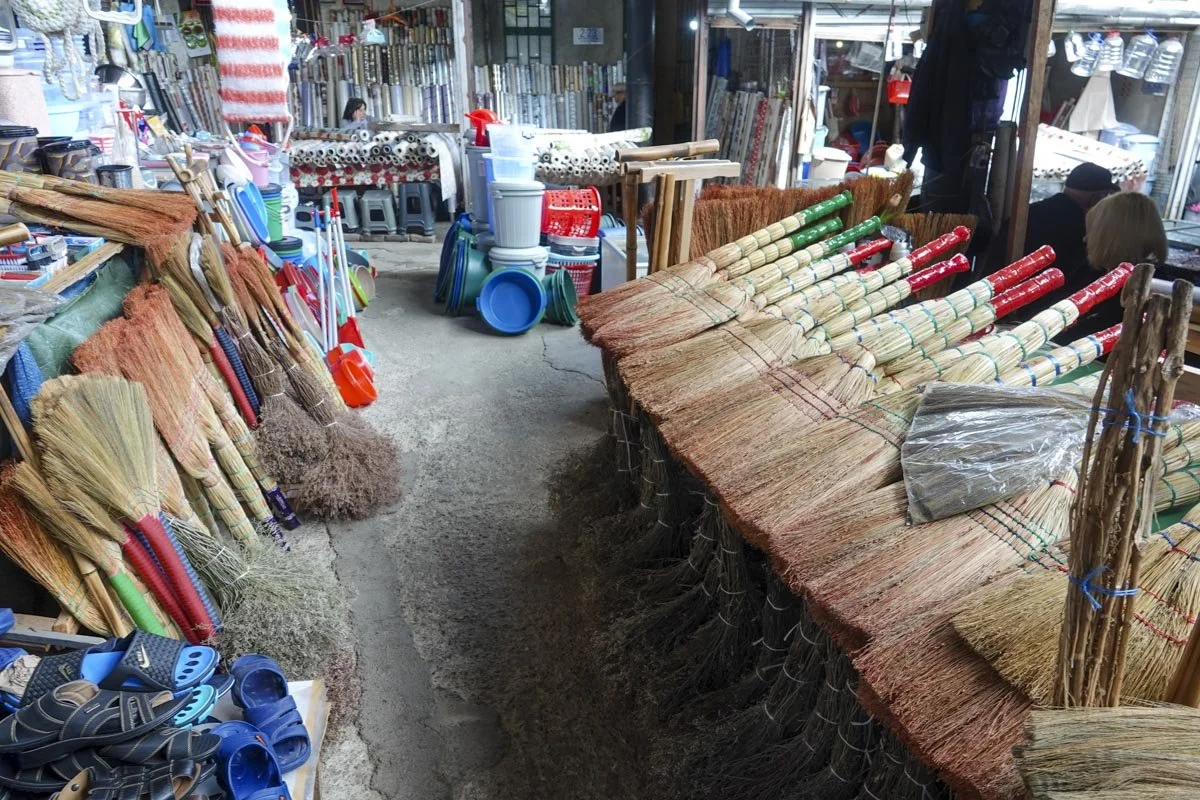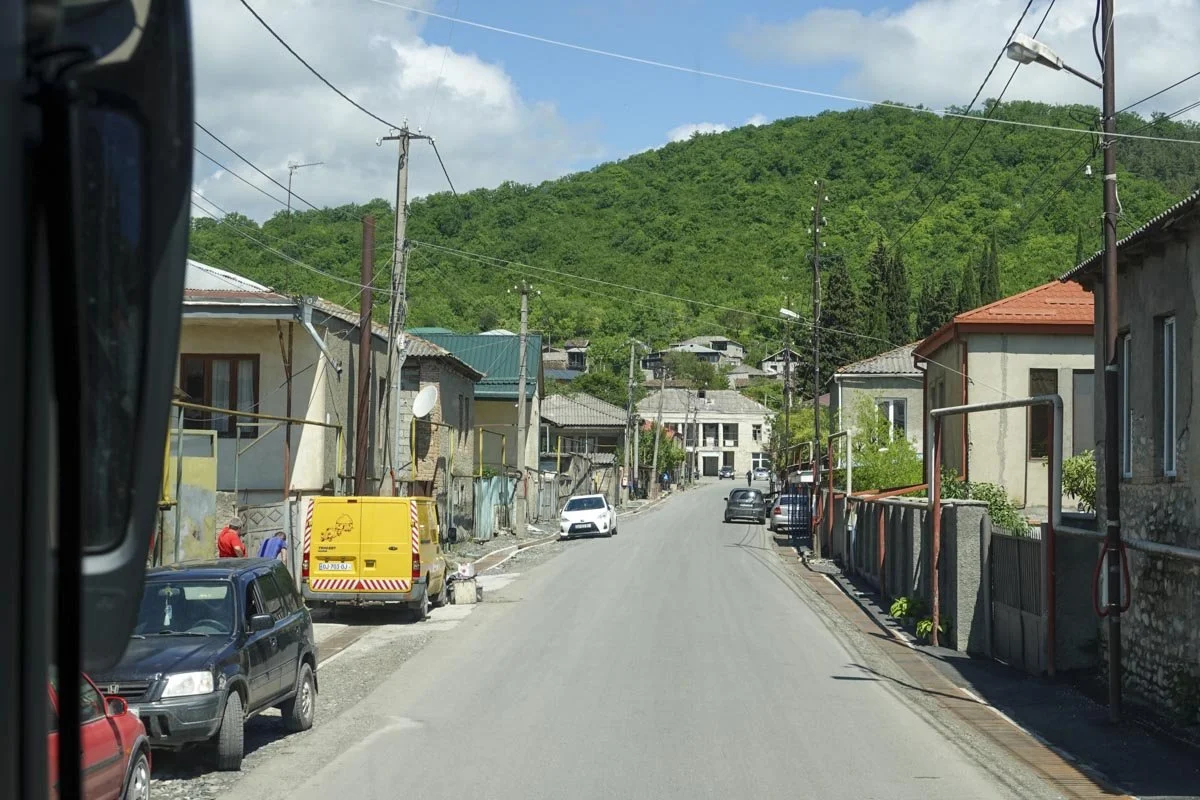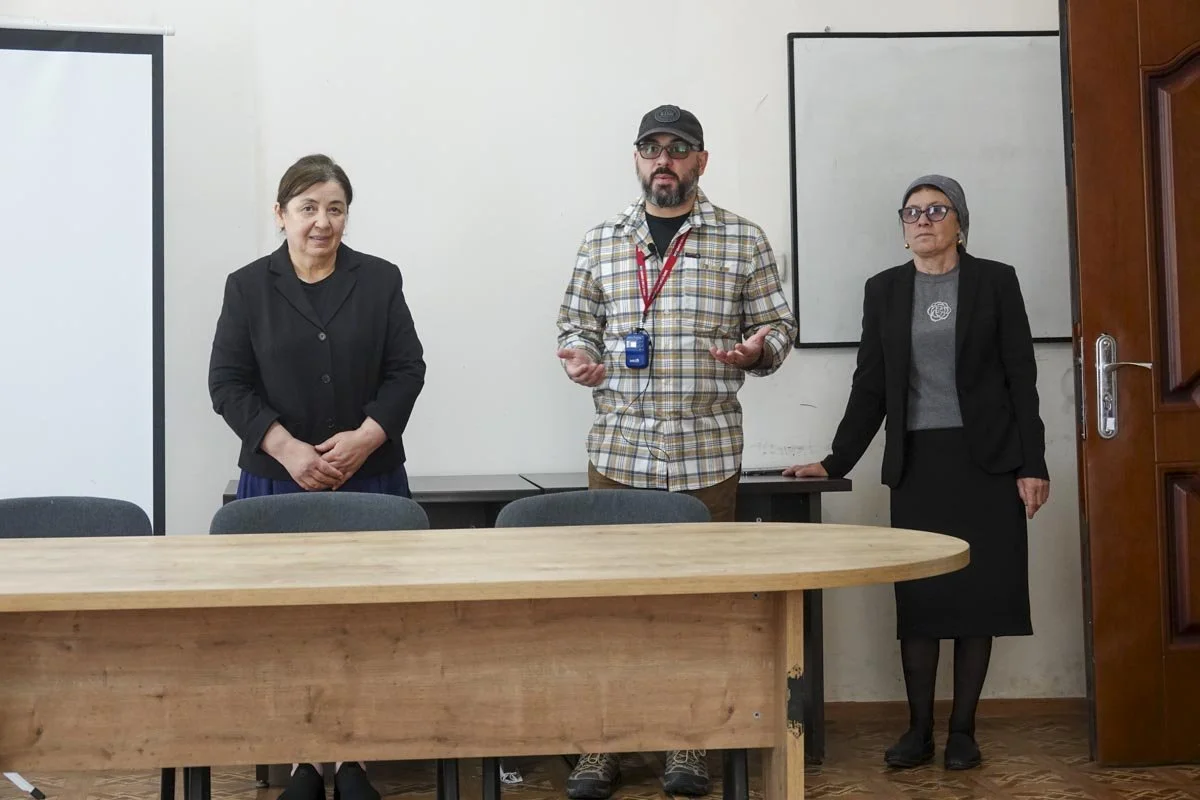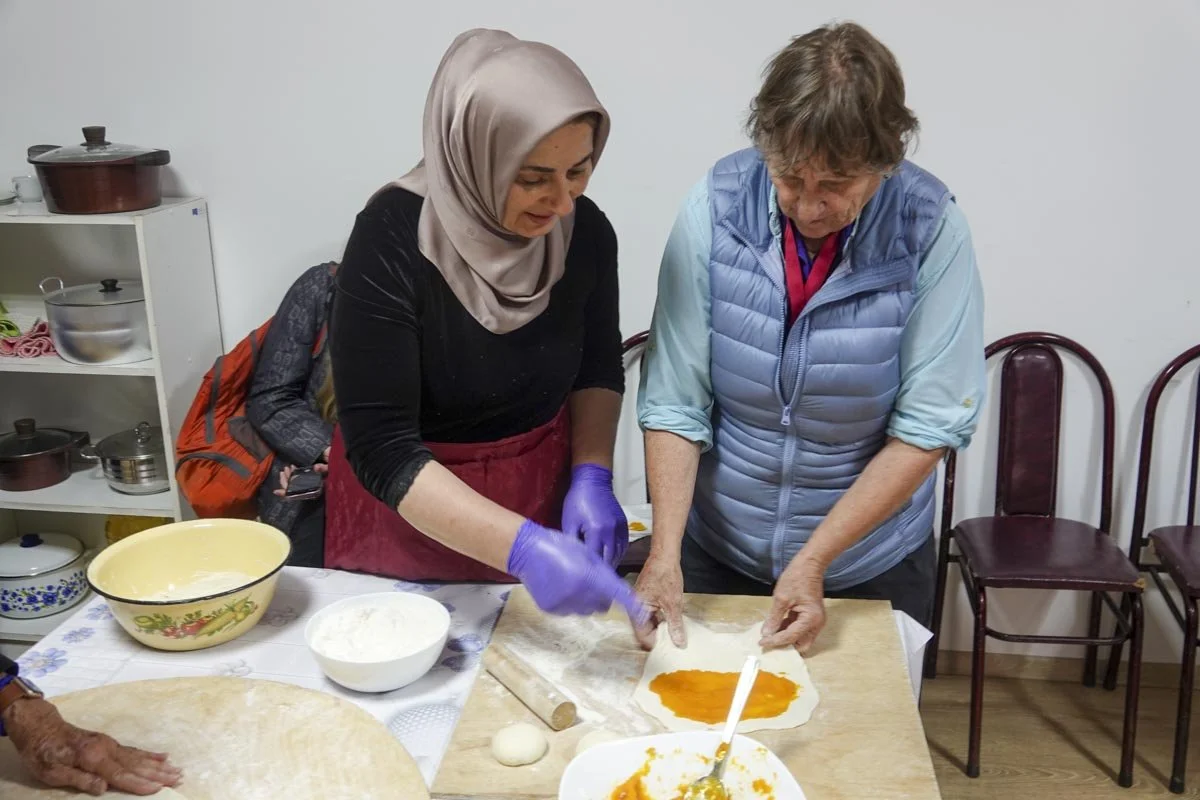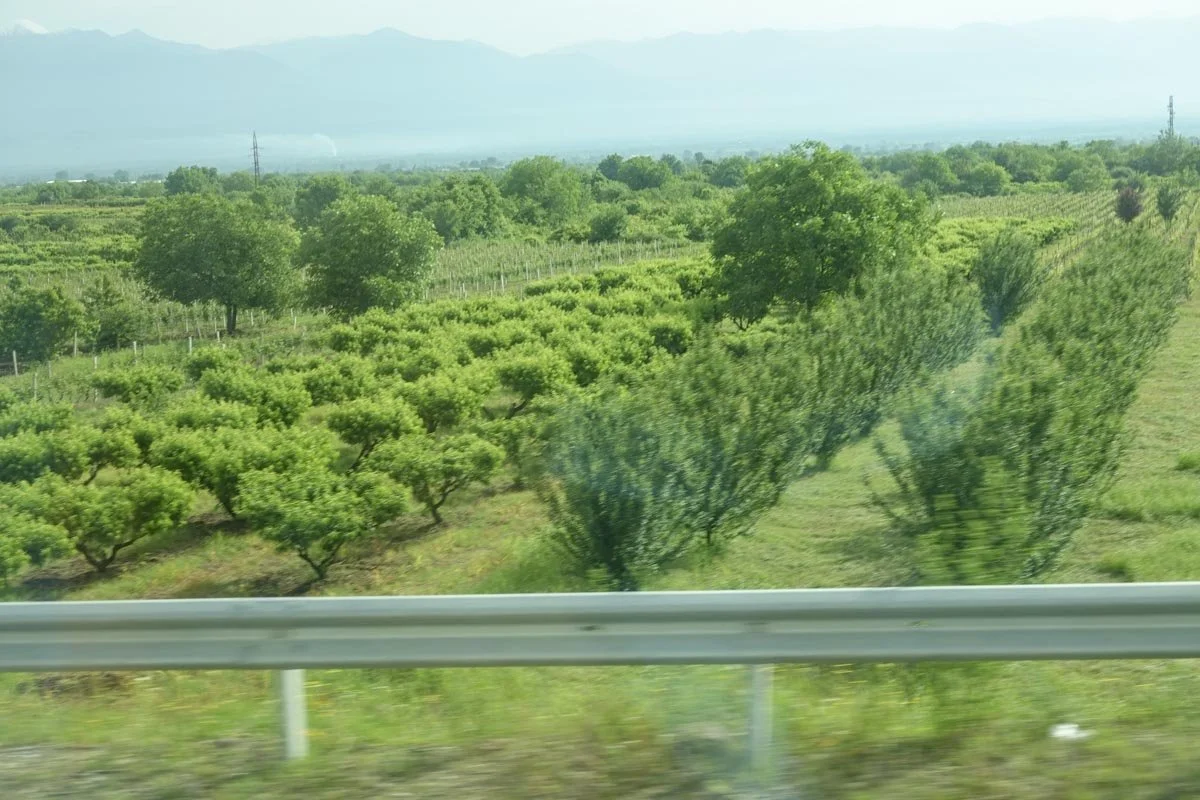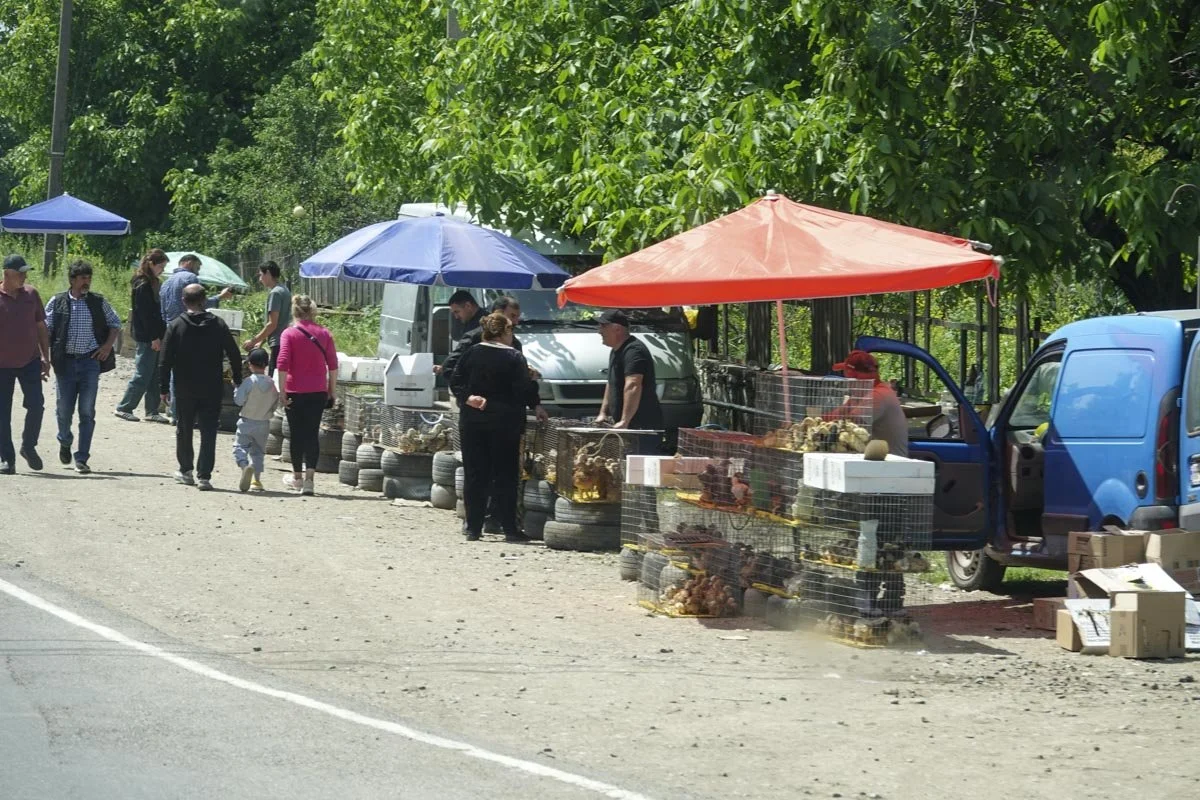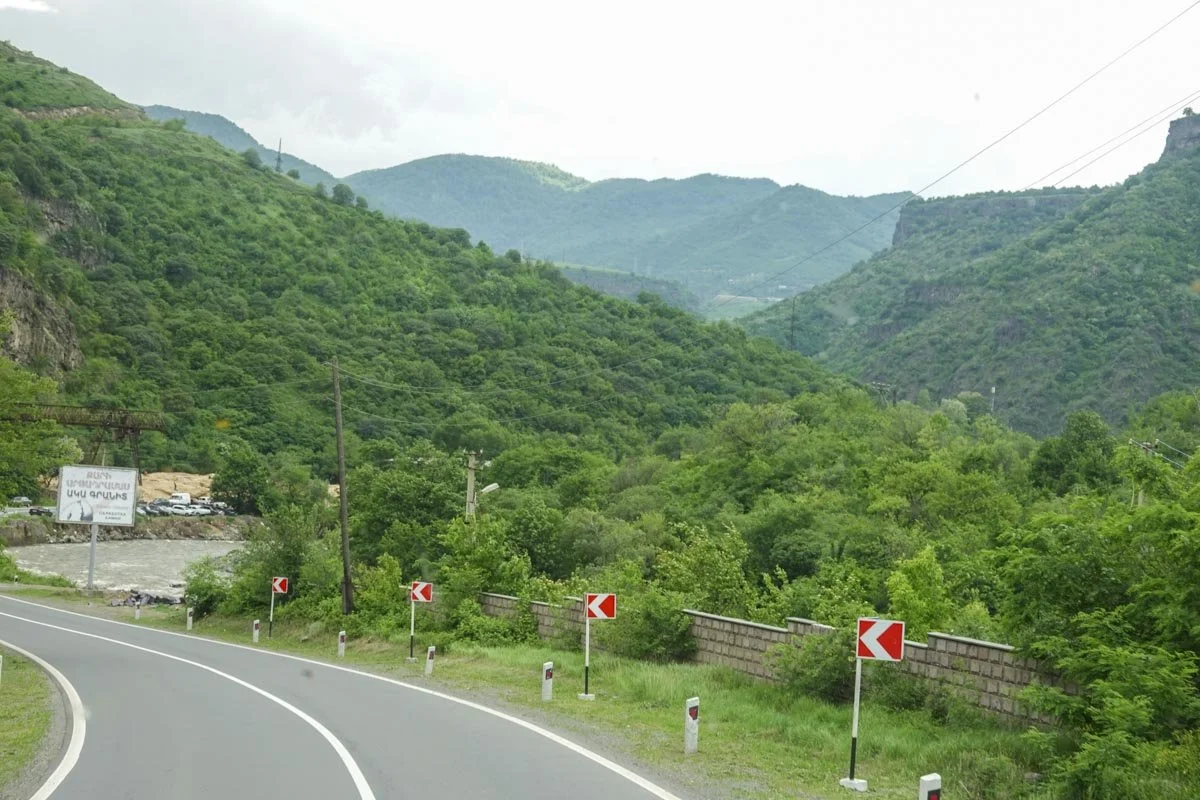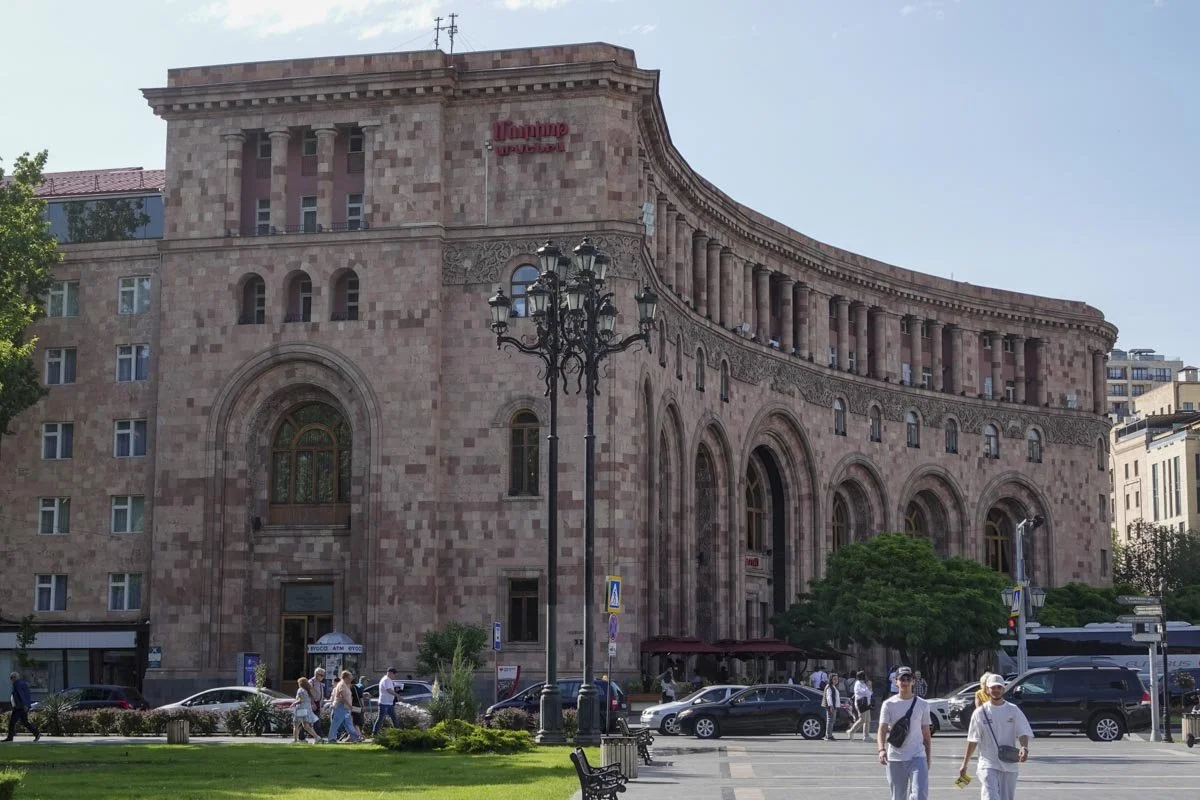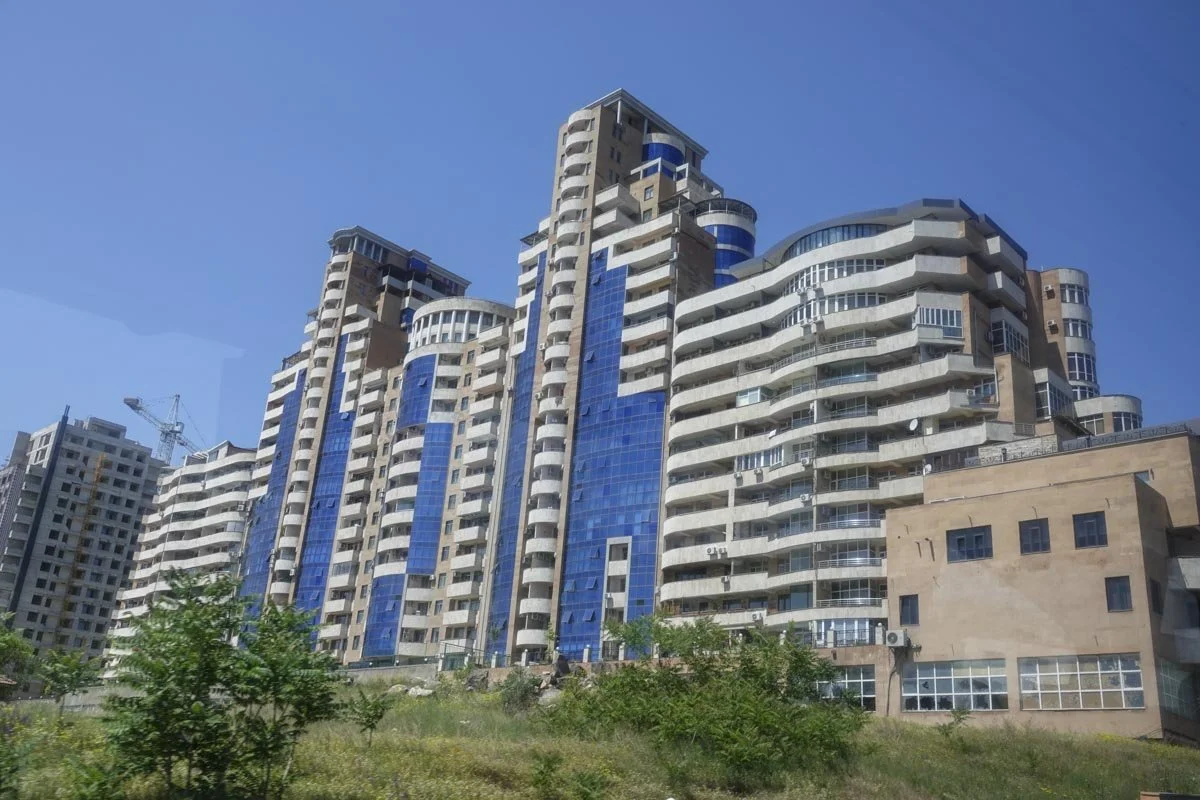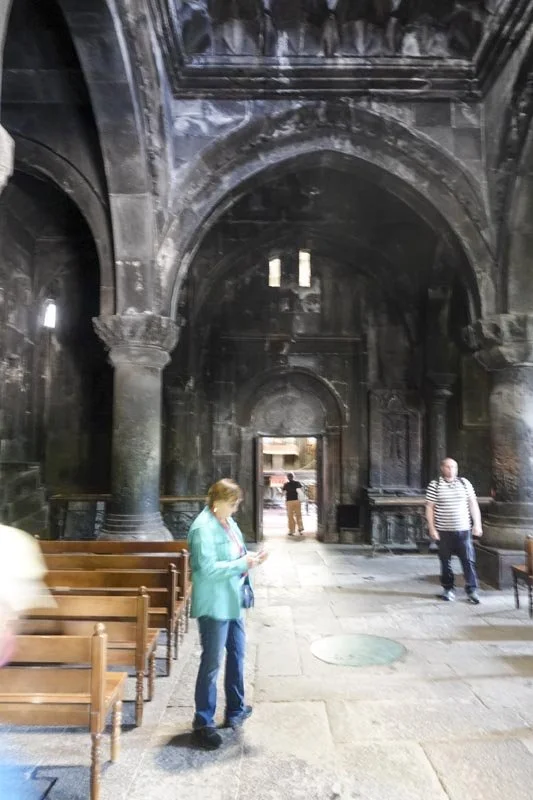Gori and the Stalin Museum
Gori is the fifth largest city in Georgia. It has Gori Fortress on a high rocky hill in the middle of the city, cathedrals, theaters, museums, and more. It is one of Georgia's oldest cities and at the crossing of strategic and economic roadways. They have found ceramics and wine jars dating back to years before Christ. But what does everyone say when Gori gets mentioned? "That's where Joseph Stalin was born".
Our visit to Gori was primarily limited to the Joseph Stalin Museum. Our guide said that Georgians had a complicated relationship with Stalin. On the one hand, he is honored for being a native son and for his leadership in fighting fascism and winning the Great War. On the other hand, he was a brutal dictator who committed many crimes and killed many innocent people. He presided over the Soviet Union from 1922 to 1953, when he died.
His love-hate relationship continues today. I would say it's the older people who still wish to honor him as some still feel like the old Soviet Union was their best days. Younger people don't have that connection and don't like the idea or the actuality of living under an autocrat. The museum was opened in 1957 but with the independence movement, The museum was closed in 1989. It was later re-opened and today, it is a tourist draw. But after the 2008 South Ossetia war, Georgia's Minister of Culture announced that the Stalin Museum would be reorganized into the Museum of Russian Aggression in the near future. A banner was placed at the entrance stating: "This museum is a falsification of history. It is a typical example of Soviet propaganda and it attempts to legitimize the bloodiest regime in history." However, the banner was removed in 2017. So, the love-hate relationship continues, but as it does, the Stalin Museum still appears to be a major tourist destination.
I'll start with two of the outer sites. First, they have the small wooden house where Stalin was born in 1878. It was a very simple house and he lived here until he was four. The house was moved here when the Soviets cleared its original neighborhood to make way for more modern housing. Stalin’s family only occupied the left side of the house below. They were not a wealthy family.
Next is Stalin's personal railway carriage. He was afraid of flying and so had his own personal green Pullman carriage for moving around. It was armor plated, weighed 83 tons, and was used by Stalin from 1941 onwards including attending the Yalta Conference and Tehran Conference. We got a personal tour of Stalin's carriage but it was not really very special inside.
The main part of the museum is a massive, two-story building that while it might ostensibly be a museum of the history of socialism, is really a memorial to Stalin. It's divided into six halls in roughly chronological order and contains perhaps 60,000 items. Many items were actually owned by Stalin or allegedly owned by Stalin, including some of his office furniture and many personal effects and gifts from over the years. Lots of what we saw was documentation, photographs, paintings, newspaper articles, and busts. It's basically a shrine to Stalin.
Below you can see the outside of the main museum building followed by a photo taken in the entrance hall. It's not a humble building. Almost all the viewing is up on the second floor.
The next photo is just one of the galleries to give an idea of the size and scope of the museum. The following photo was his personal office setup.
I think that almost every formal stop of any kind that we made had a gift shop, whether it was a museum, cathedral, monastery, or whatever. The Stalin Museum was no exception except to say that the gift shop was very small. I was mostly intrigued by the fact that they were selling Stalin Wines. I guess he was a true Georgian. Our guide told us that Stalin hated dry wines and only liked semi-sweet wines. I would have hated to have been the guy who served Stalin a dry wine.











